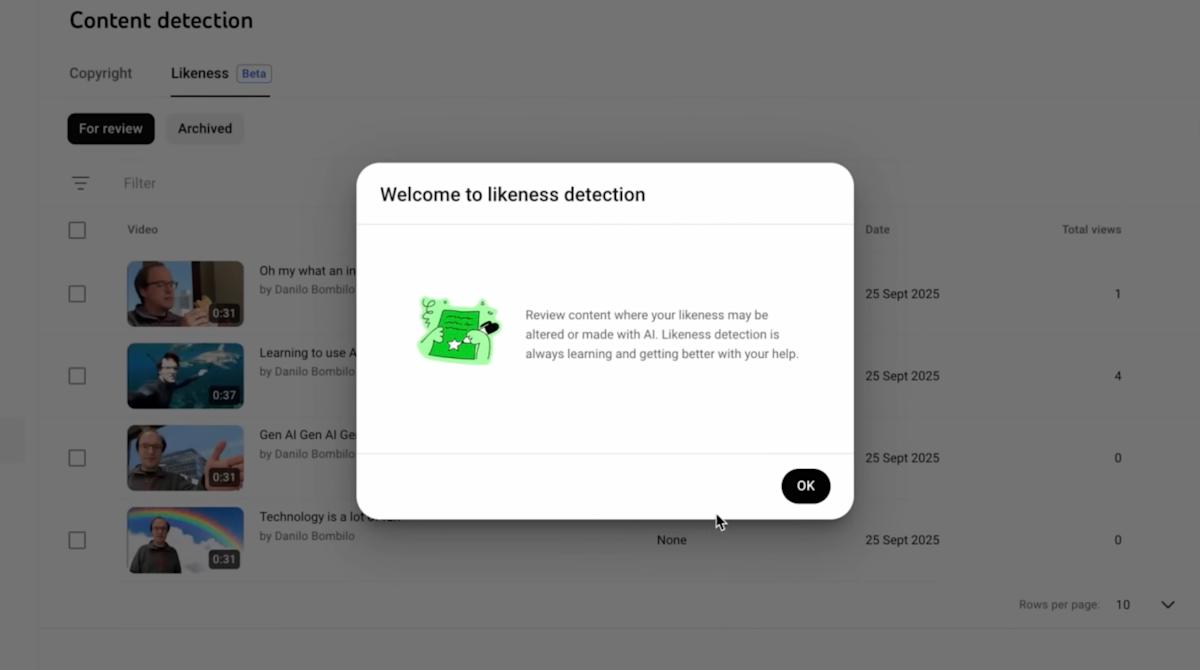YouTube Launches Likeness Detection Tool to Fight Deepfakes

Key Points
- YouTube is introducing a likeness detection tool to identify AI‑altered facial videos.
- The feature is initially available to members of the YouTube Partner Program.
- Enrollment requires a government ID and a short video selfie for verification.
- The system works like Content ID, scanning uploads for visual matches to verified faces.
- Creators can review flagged videos and request removal of infringing content.
- Current coverage is limited to facial modifications; AI‑changed voices are not detected.
- The tool aims to protect individuals from unauthorized deepfake usage on the platform.
YouTube is beginning to roll out a new likeness detection feature aimed at identifying and removing videos that alter a person’s facial appearance with artificial intelligence. The tool, initially available to members of the YouTube Partner Program, requires creators to submit a government ID and a short selfie for verification. It works similarly to Content ID by scanning uploads for facial matches, allowing individuals to flag infringing content for removal. The system currently focuses only on visual modifications and does not address AI‑altered voices.
New Tool Targets AI‑Generated Facial Manipulations
YouTube has started deploying a likeness detection feature designed to combat the growing problem of deepfake videos that modify a person’s face using artificial intelligence. The rollout is being limited at first to members of the YouTube Partner Program, giving early access to creators who meet the platform’s eligibility criteria.
Verification Process Mirrors Existing Systems
To enroll in the program, individuals must provide a government‑issued identification document and a brief video selfie. This verification step confirms the person’s identity and supplies the system with reference material it can use to compare against uploaded content. The approach mirrors YouTube’s existing Content ID technology, which scans for copyrighted audio and video matches.
How the Detection Works
Once a user’s identity is verified, the likeness detection engine scans new uploads for visual patterns that correspond to the verified individual’s facial features. If a potential match is found, the creator receives a notification and can review the flagged video. The creator then has the option to confirm the infringement and request removal of the content from the platform.
Scope and Limitations
The current version of the tool focuses solely on cases where an individual’s face has been altered with AI. It does not yet address situations where a person’s voice is synthetically modified without consent. As a result, videos that feature deepfake audio but retain the original visual likeness may not be captured by this detection system.
Implications for Creators and Viewers
By giving creators a mechanism to protect their visual likeness, YouTube aims to reduce the spread of unauthorized deepfake content that can damage reputations or spread misinformation. The feature also reinforces the platform’s broader commitment to safeguarding user‑generated content against emerging AI‑driven threats.
Future Outlook
While the tool is presently limited to facial modifications, YouTube’s rollout suggests that the company may expand detection capabilities to cover additional forms of AI‑generated manipulation, such as voice deepfakes, as the technology evolves and user demand grows.